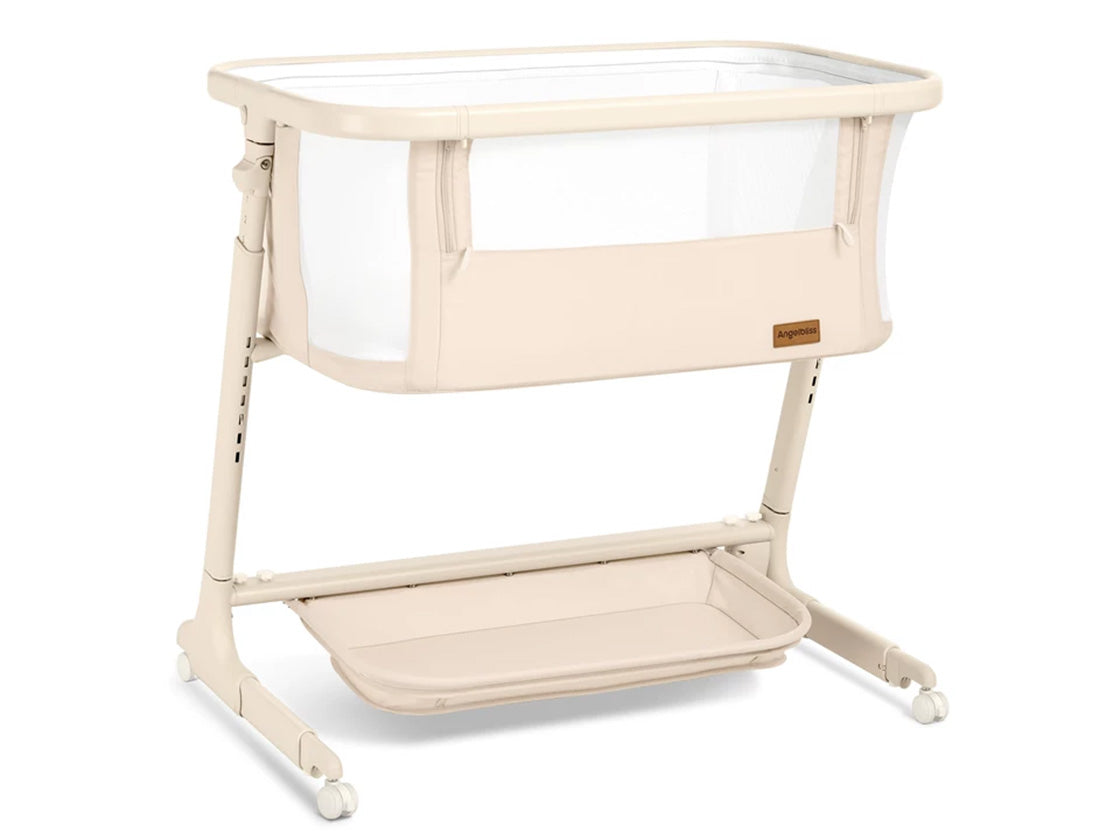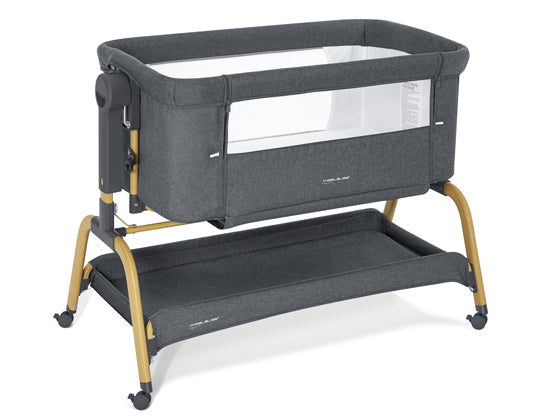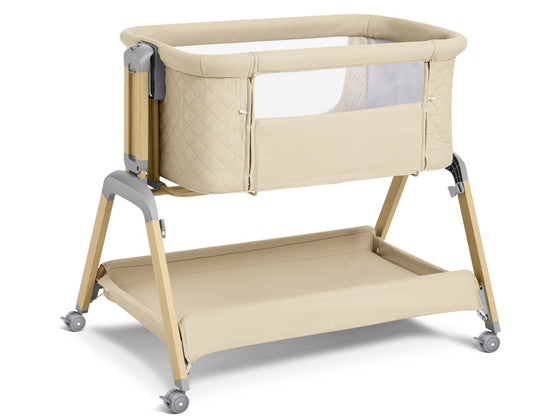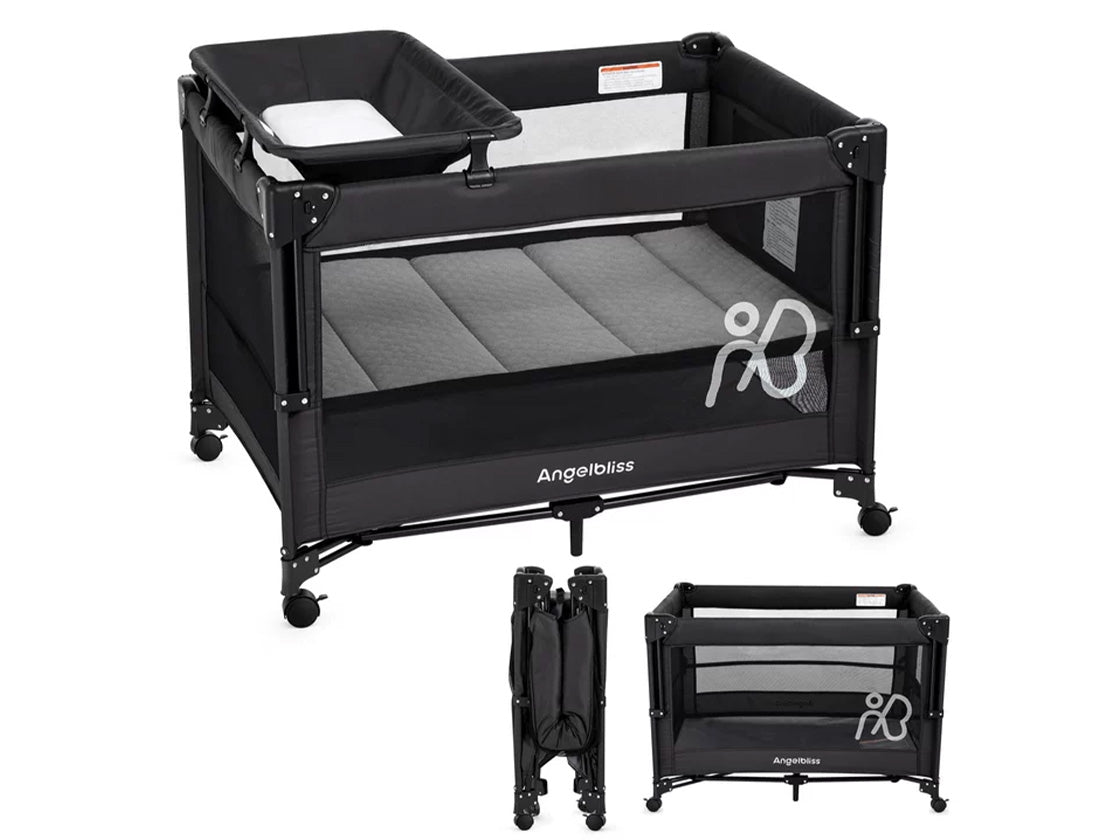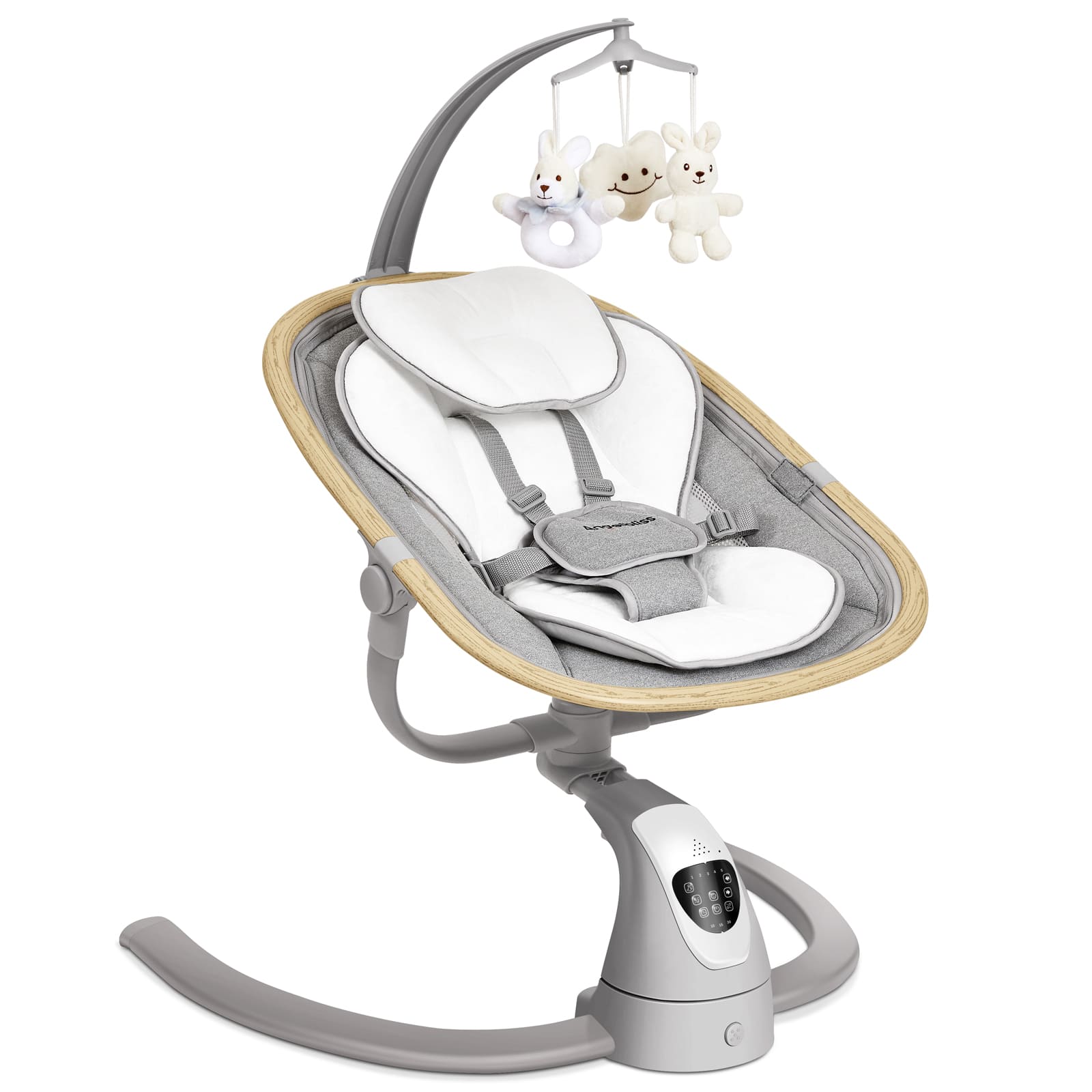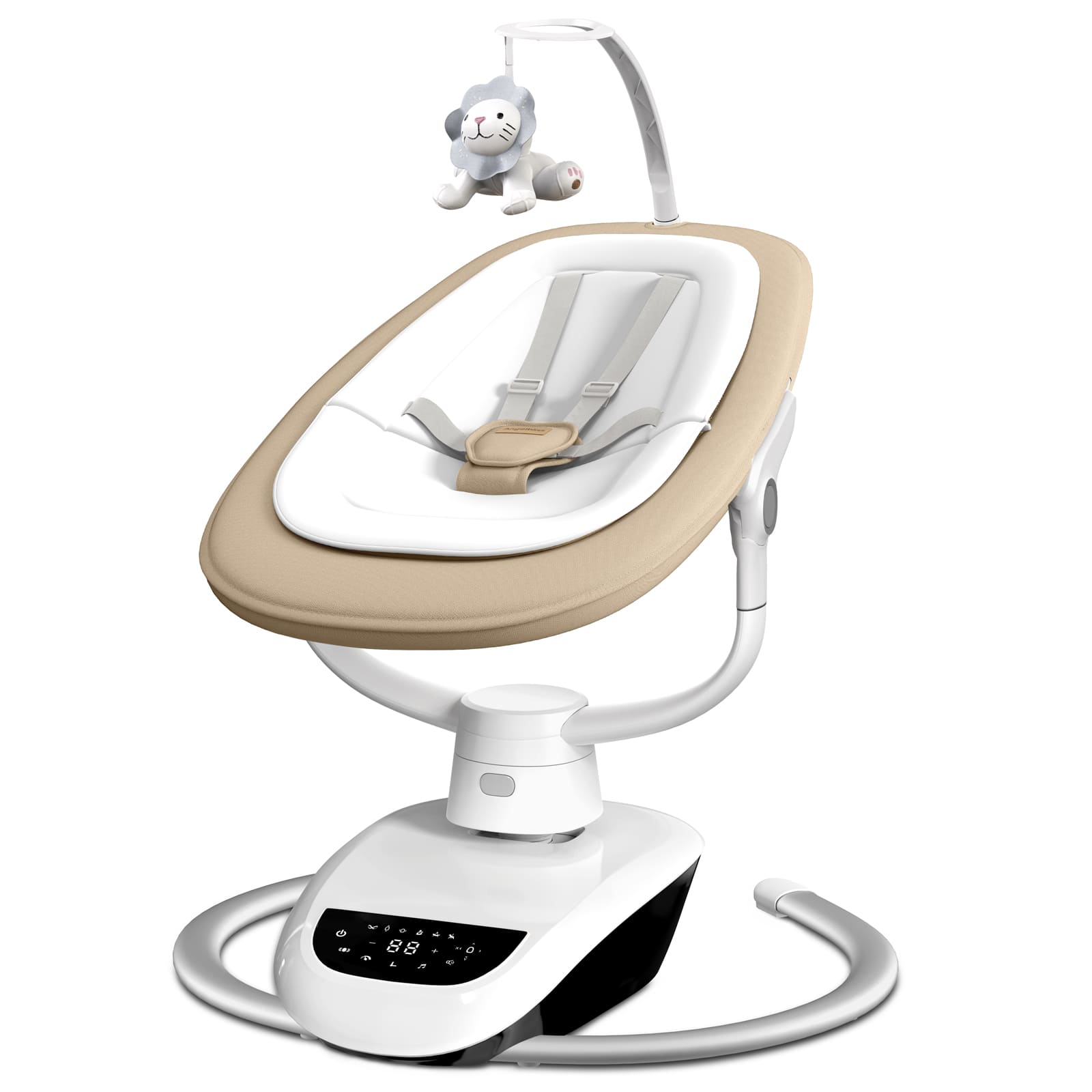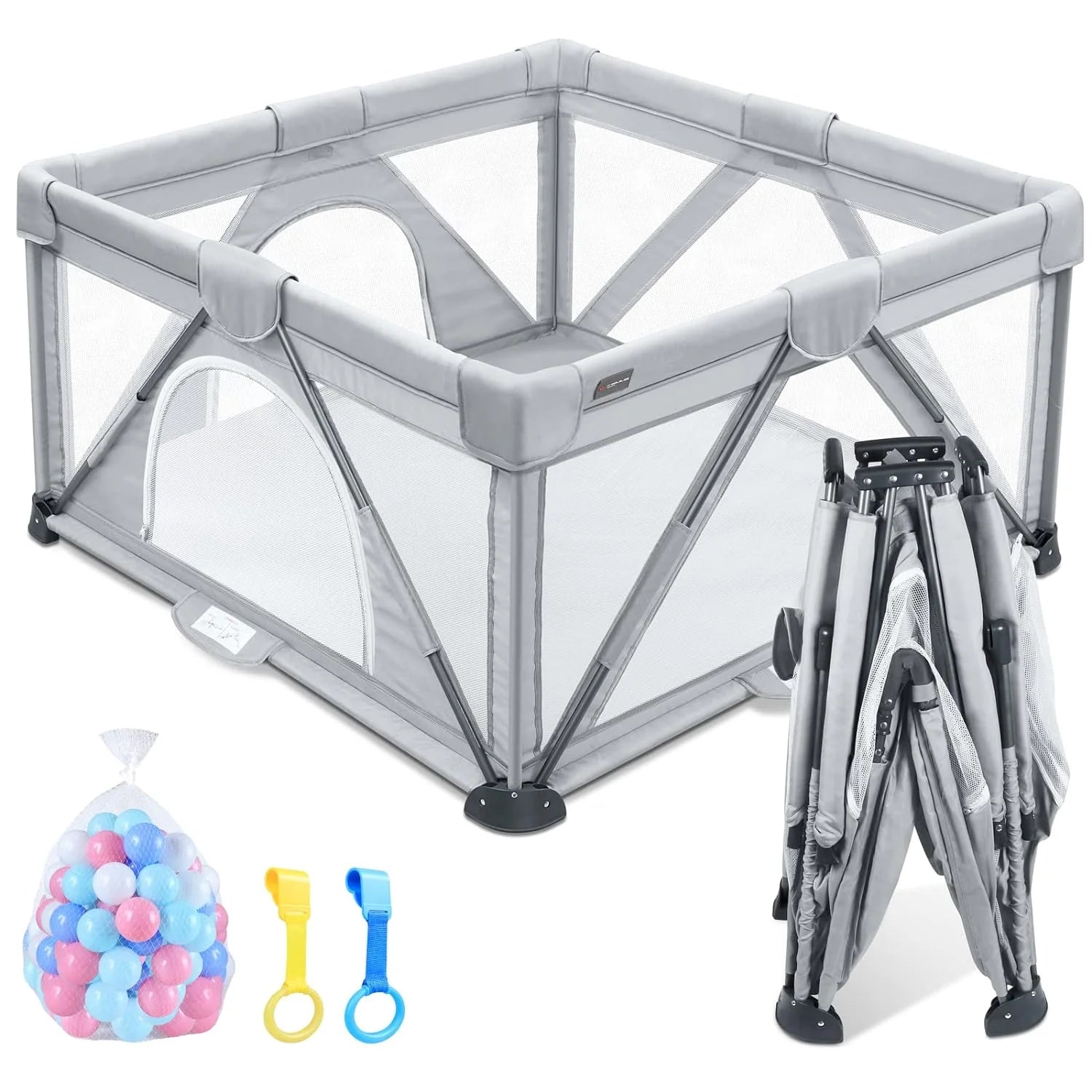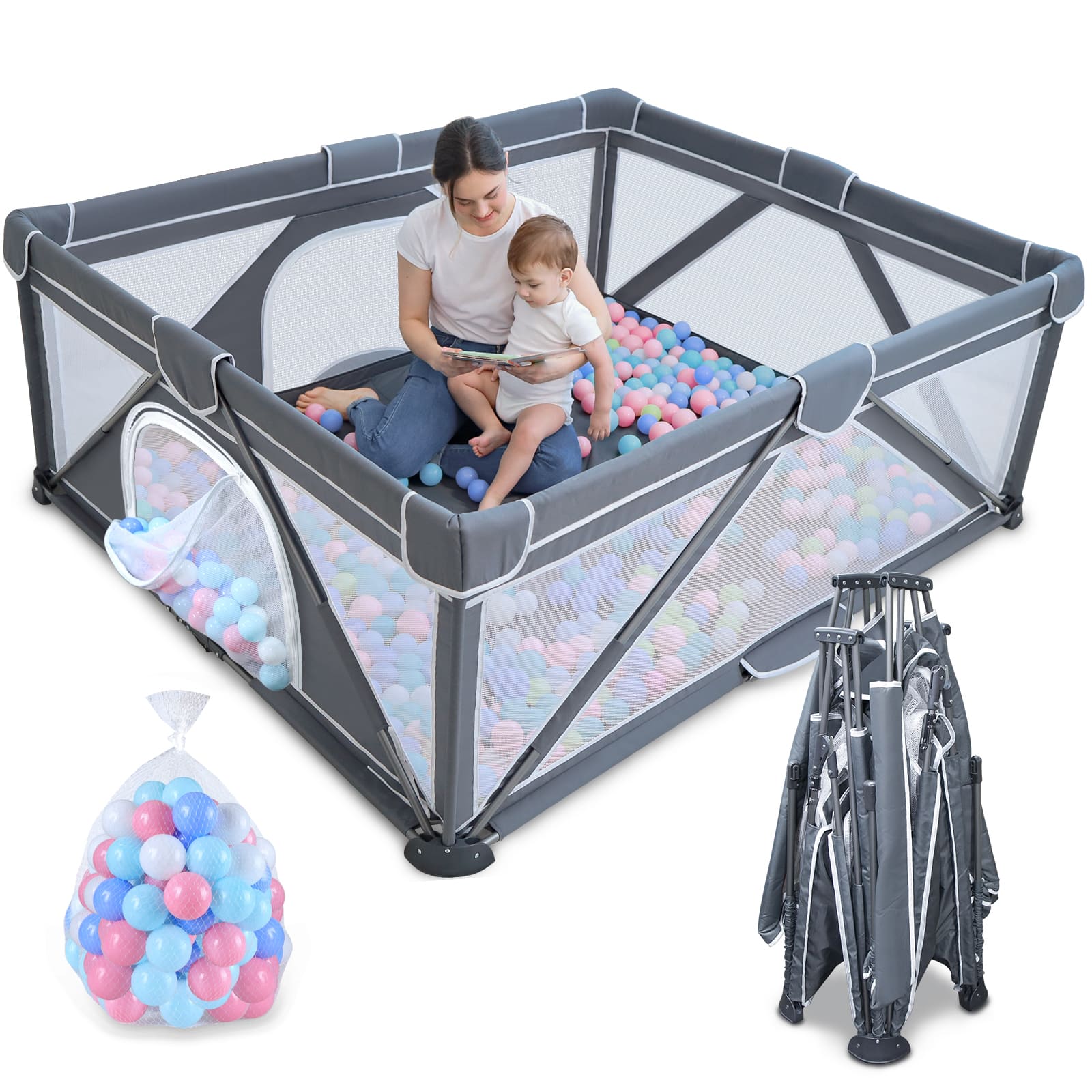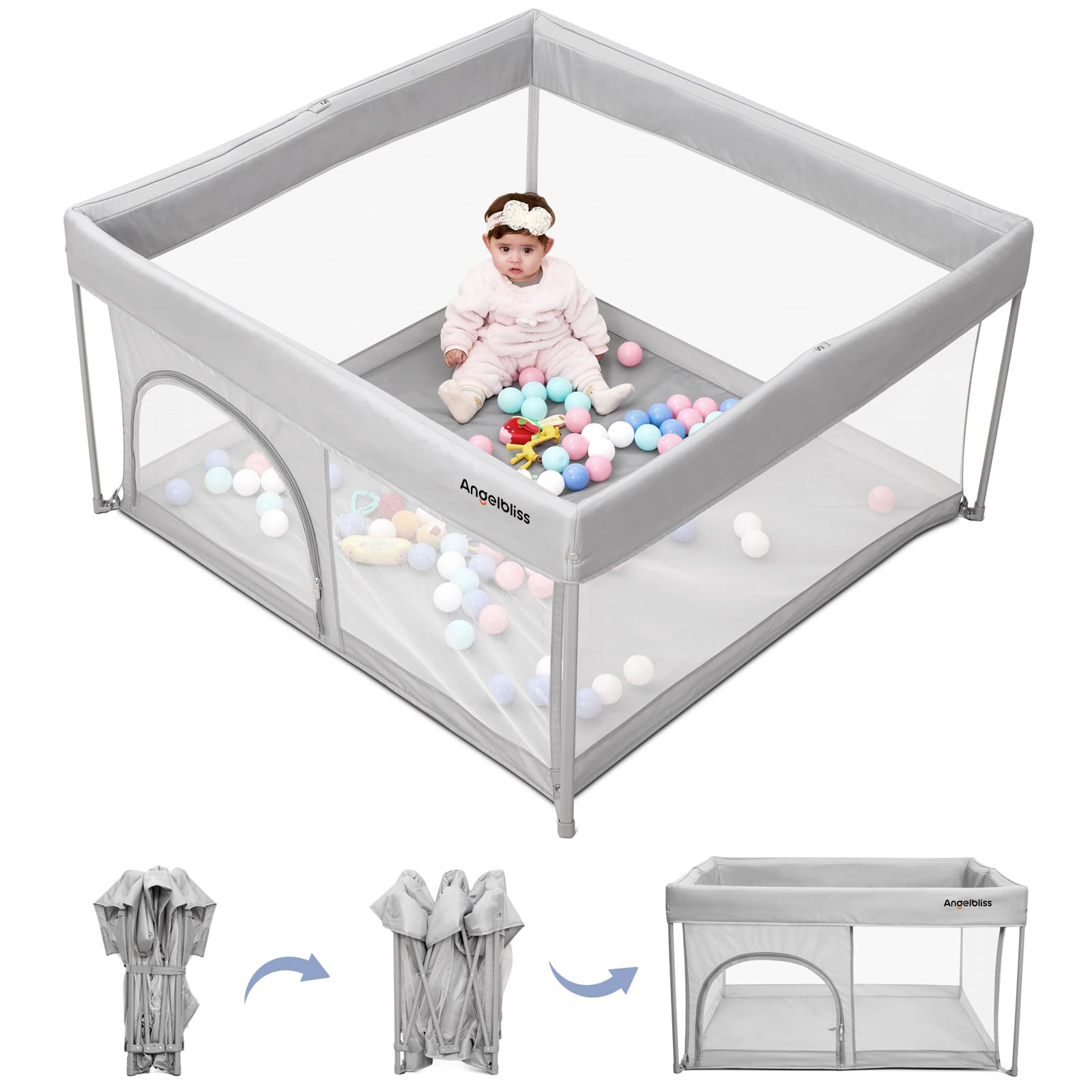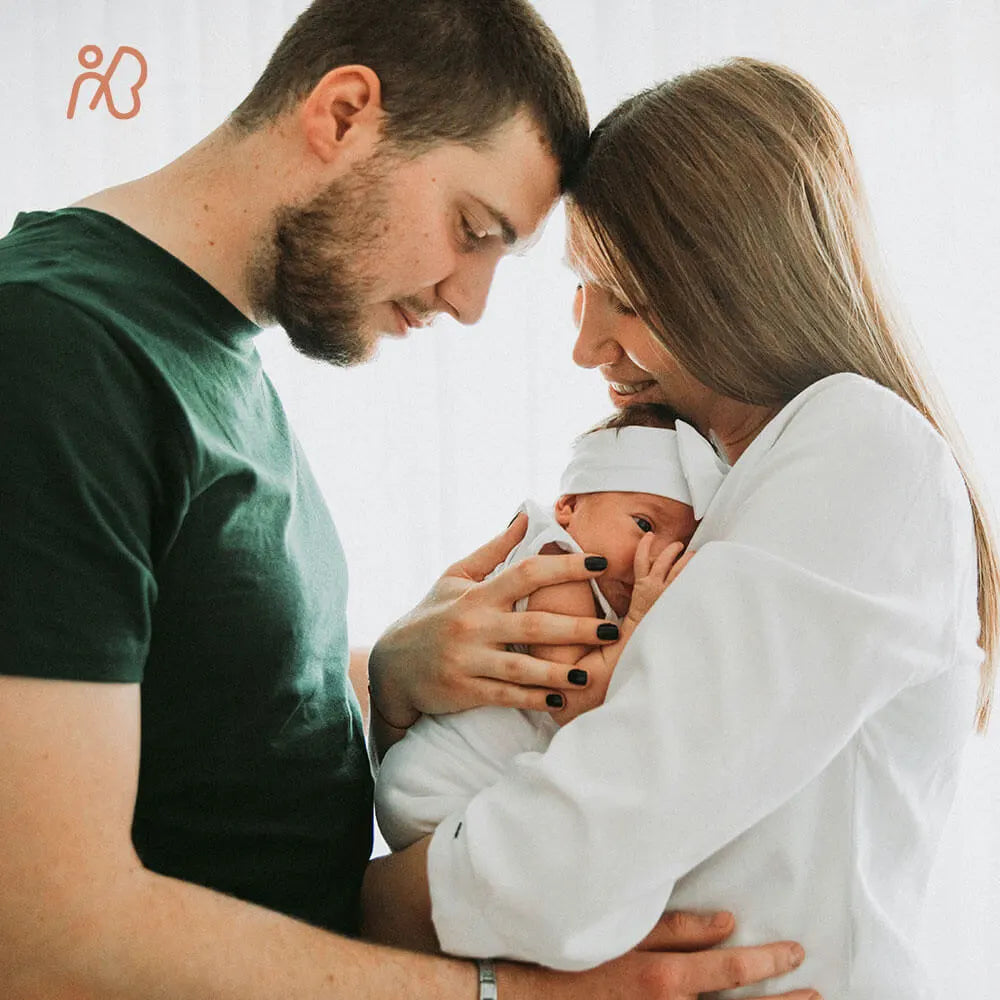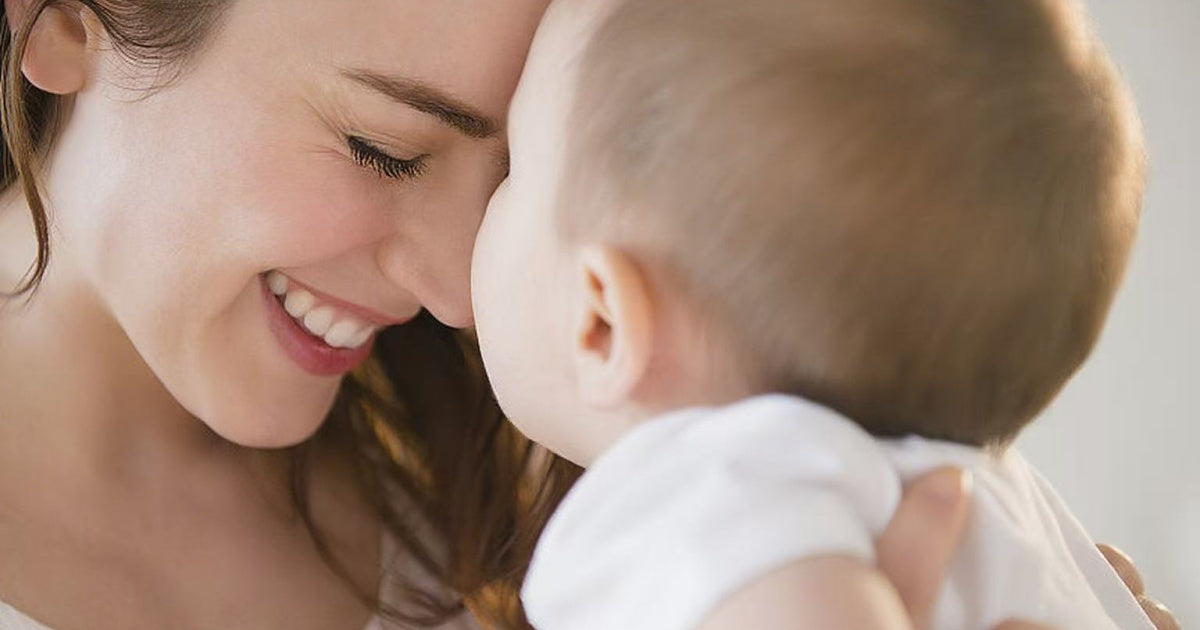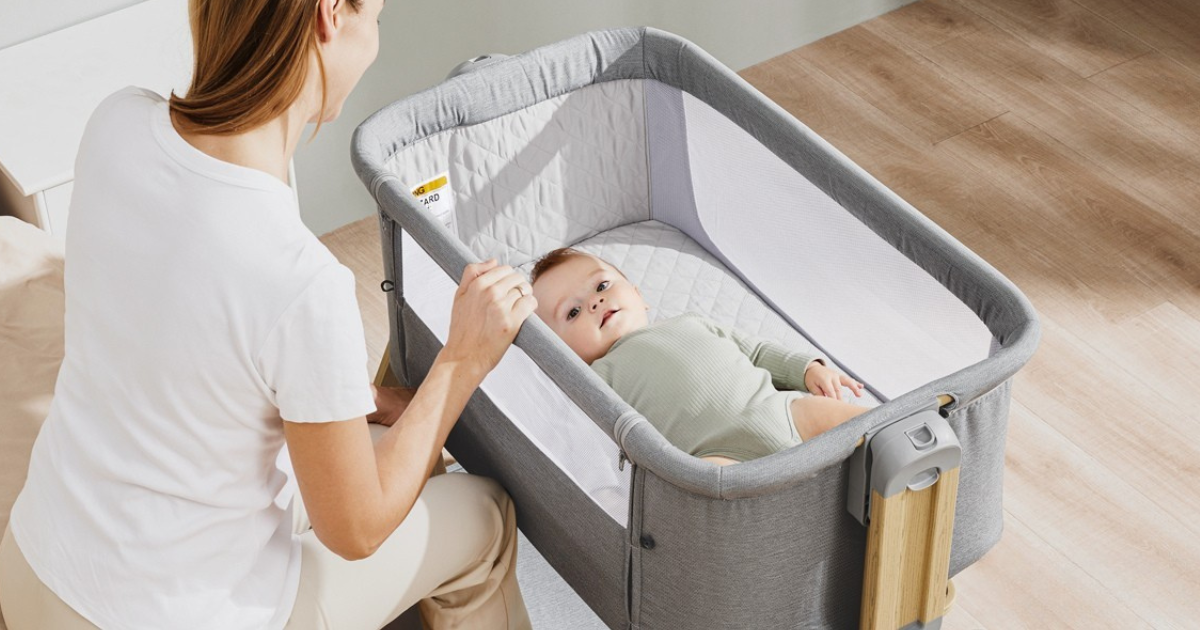Baby sleeping in a bouncer might seem like a peaceful solution for tired parents, offering a moment of quiet as your little one drifts off. Yet, this common scenario hides critical safety risks that every parent needs to understand.
We are aware of how much one longs for peace amid the lovely turmoil that is parenthood. Our unwavering commitment to your baby's safety compels us to clarify why bouncers are not recommended for sleep, what the experts advise, and how to truly ensure a safe and restful sleep environment for your precious newborn.
1. The Core Dangers of Babies Sleeping in Bouncers
Baby bouncers are excellent tools for awake-time play and temporary containment, but their design makes them fundamentally unsafe for unsupervised naps or overnight sleep. Here's why that seemingly peaceful bouncer nap carries significant risks:
1.1 Positional Asphyxia: The Silent Threat
This is arguably the most concerning danger. A baby's head can easily flop forward while they are sleeping in a semi-reclined position, like in a bouncer, pressing their chin on their chest. This seemingly benign posture can critically block their airway, making it incredibly difficult, or even impossible, for them to breathe effectively. Newborns and young infants are particularly at risk since they do not yet have the developed neck control necessary to raise or move their heads on their own. Even when securely strapped into the bouncer, the constant pull of gravity and the inclined angle contribute to this dangerous scenario.

1.2 Increased SIDS Risk (Sudden Infant Death Syndrome)
Baby bouncers, and indeed all inclined infant sleep products, categorically do not meet the established criteria for a safe sleep environment as recommended by authoritative health organizations. A truly safe sleep surface must be flat and firm, with no additional padding or soft materials. Bouncers, by their very nature, are inclined and often feature plush, contoured padding. This combination of an inclined angle and soft surfaces significantly elevates the risk of SIDS, as both factors are well-documented contributors to SIDS risk.
1.3 Risk of Falls & Entrapment
As infants grow and develop increased mobility, the inherent risks associated with bouncer use escalate.
Falls: Even if your baby is diligently strapped in, an infant who can wiggle, scoot, or is nearing the bouncer's weight or developmental limits could potentially shift their body weight. This movement can destabilize the bouncer, leading to it tipping over, or in rare but severe cases, a baby attempting to climb or wiggle out if the restraints are improperly secured or fail.
Entrapment: There's also a risk of your baby's limbs or head becoming dangerously caught in gaps within the bouncer's frame, or getting tangled in straps, particularly if they shift into an unexpected position while unsupervised.
1.4 Developmental Implications
Beyond immediate safety hazards, prolonged time, especially sleep, in a bouncer can have subtle developmental drawbacks:
Limited Movement: Excessive time in any contained device can restrict a baby's natural movements, potentially delaying the development of crucial gross motor skills needed for rolling, pushing up, and crawling.
Flat Spots (Plagiocephaly): Consistent pressure on one part of a baby's developing skull can lead to flat spots (positional plagiocephaly), which can be exacerbated by prolonged periods in a reclined position.
Hinders Tummy Time: Time in a bouncer replaces valuable floor time and supervised tummy time, which are essential for strengthening neck and core muscles.
2. What Do the Experts Say?
The consensus from leading health authorities on infant safety is unequivocal: inclined devices like baby bouncers are not safe for infant sleep.
2.1 American Academy of Pediatrics (AAP) Stance
The American Academy of Pediatrics (AAP), the foremost authority on child health in the U.S., explicitly states that:
Infants should always be moved from inclined devices (including bouncers, swings, car seats, and other carriers) to a safe, flat sleep surface (like a crib or bassinet) if they fall asleep.
Their fundamental guidelines for safe sleep constantly reaffirm: "Back to Sleep, Alone, on a Flat Firm Surface." There's no deviation for naps or short periods of sleep.
2.2 CPSC (Consumer Product Safety Commission) Alerts
Strong warnings against inclined newborn sleep items have also been issued by the U.S. Consumer Product Safety Commission (CPSC), the federal organization tasked with safeguarding the public from irrational risks of harm or death connected to consumer products. Their alerts stem from numerous tragic incidents where babies have died while sleeping in such devices, reinforcing the need for parents to adhere to safe sleep guidelines strictly.
3. Where Your Baby Should Sleep
Given the risks, it's vital to know precisely where your baby should be sleeping. The guidance is simple, consistent, and scientifically backed:
3.1 The Crib
A standard crib is the cornerstone of safe infant sleep. It serves as the primary, long-term safe sleep solution for babies from infancy through toddlerhood. Whether it's a quick midday nap or an overnight sleep, a crib offers a roomy, stable, and safe space that is especially made to satisfy strict safety regulations.

3.2 The Bassinet
For the initial months, a bassinet is an excellent and often preferred choice for newborns. Because of its smaller size, it can easily fit in your bedroom, making it much easier to check on your baby and feed them at night while keeping them safely confined in their own sleeping area near you.
(For comprehensive guidance on selecting a safe bassinet, explore our dedicated resource: [Choosing the Safest Bassinet: Expert Tips & Essential Safety Standards])
3.3 The Pack and Play / Portable Playard
A Pack and Play, sometimes referred to as a portable playard, is a very versatile and secure option that doubles as a safe sleeping space and a safe play area. For smaller infants, several versions have a detachable bassinet insert that may be converted into a sturdy playard when your child gets older. Because of their natural portability, they are very practical for safe travel or for offering safe, supervised naps in different places of the house.
(Curious about the full range of functionalities a Pack and Play offers? Uncover their versatility here: [What is a Pack and Play? Your Go-To Guide for Busy Parents])
The absolute, non-negotiable key takeaway for all these safe sleep options: They must consistently offer a flat, firm, and bare sleep surface – no exceptions, no deviations, for every single sleep session.
4. Using Your Baby Bouncer Safely (Only for Awake & Supervised Play)
While bouncers are emphatically not for sleep, they can be wonderfully useful tools for soothing and engaging your baby when used correctly and under constant supervision.
Strict supervision cannot be compromised: In no case should you leave your infant alone in a bouncer. You should always keep your eyes on them.
Always Use the Harness: Consistently secure your baby using the bouncer's harness or straps. Always make sure the buckle is fully engaged and make sure they are snug but not too tight.
Respect Weight & Age Limits: Pay close attention to the weight, height, and age restrictions set by the manufacturer. Discontinue use immediately if your baby can sit up unassisted, or reaches the maximum weight limit, whichever comes first.
Limit Time: Use the bouncer for short, supervised periods only – typically no more than 20-30 minutes at a time. It's designed for entertainment and temporary soothing, not for extended stays.
Proper Placement: The bouncer should always be set up on a level, stable, and level floor. Never position it on an elevated surface, such as a table, counter, or bed, from which it could tip over and cause a severe fall. Keep it away from cords, windows, heaters, and any other potential hazards.
Transfer if Drowsy or Asleep: This is paramount. If your baby shows signs of drowsiness or falls asleep in the bouncer, immediately and gently transfer them to a safe, flat, bare sleep surface in a crib, bassinet, or Pack and Play.
Prioritizing Safe Sleep for Peace of Mind
It is true that baby bouncers can be an excellent tool for offering your infant comfort and stimulating entertainment when they are awake. But when it comes to sleeping, whether it's a little nap or a full night's sleep, the risks that come with bouncers are obvious and grave. Consistently selecting a flat, solid, and bare sleep surface—found only in a crib, bassinet, or Pack & Play—is essential to putting your baby's safety first.
Making these well-informed, safety-conscious decisions regarding your baby's sleeping environment will not only greatly safeguard your priceless child but also provide you as a parent with priceless peace of mind, enabling you to confidently treasure those formative years.

